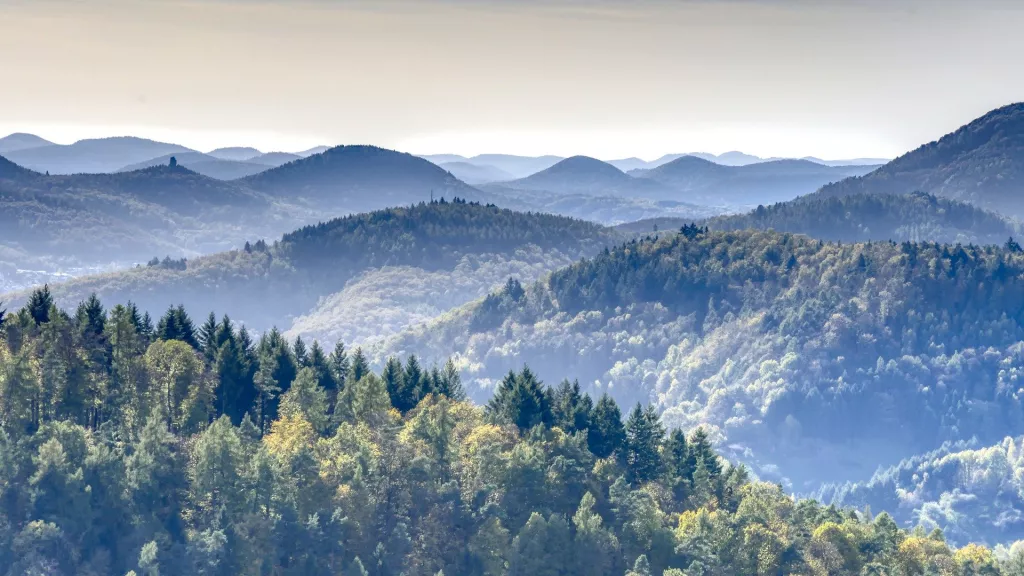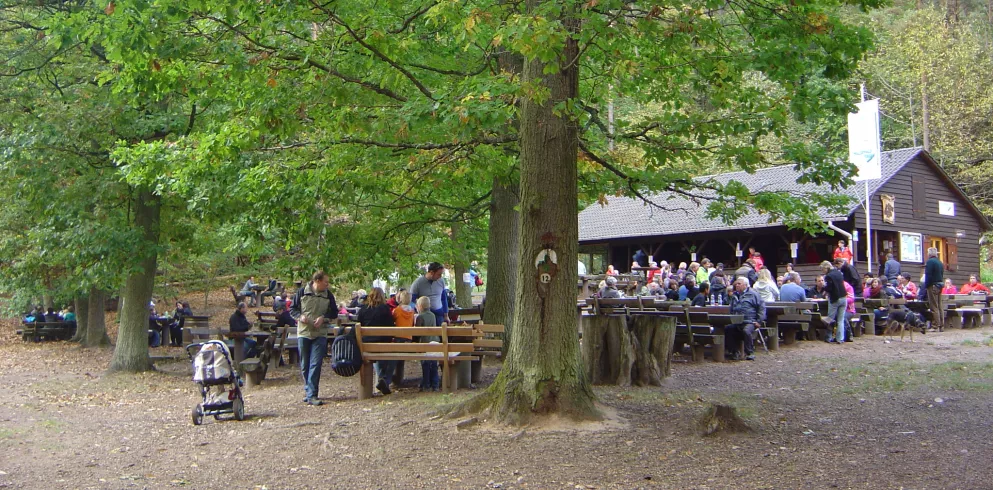Under the sign of sustainability.
In the past, the Palatinate Forest was primarily a source of wood as a raw material. Today we also recognize the recreational and leisure function of the forest and especially its ecological importance. The forest as a "landscape worthy of special protection" has moved into the center of consideration.
Initially established as one of the first nature parks in Germany, the Palatinate Forest was recognized as a biosphere reserve by UNESCO in 1992. Since 1998, it has been the German part of the first transboundary biosphere reserve in Europe. Hence the somewhat unwieldy official name of the area: Pfälzerwald-Nordvogesen Biosphere Reserve.
The original idea of the Pfälzerwald Nature Park was to be a place of recreation and encounter with nature for the population of the surrounding metropolitan areas. Forest parking lots were created, hiking trails were developed and benches were installed. In cooperation with the Palatinate Forest Association, which had huts built and managed them, the tourist use of the forest began.
Since the mid-1970s, those responsible have done much to maintain the landscape and biotopes. Among other things, they had the coniferous forest monocultures reforested with deciduous trees, thus transforming them into more species-rich mixed forest.
Since the Palatinate Forest has been recognized as a biosphere reserve, ecological aspects, sustainable management as well as environmental education and research have been given priority. Accordingly, different zones with different objectives and protective functions have been designated.
On the one hand there are the core zones. In them, complete protection of the ecosystems applies. Natural growth processes take place here largely uninfluenced. There is no forest management and tourist use is limited to a minimum. These 16 core zones cover only a good two percent of the biosphere reserve's total area.
Then there are the maintenance zones. In these, the focus is on nature-friendly management. The aim is to preserve the character of the landscape.
Finally, there are the development zones. In these, sustainability has top priority. Visitor flows are managed, and the focus is on gentle tourism. The goal: to constructively combine the interests of forestry and hunting on the one hand and the requirements of nature conservation on the other, and to reconcile tourism concerns with all of this.


